Autumn Gear Guide
Find inspiration in our Gear Guide that will keep you out on your bike through wind or rain.
Download NowParis, the City of Light, took the global stage with the recent Olympics, using the event as a catalyst to reimagine itself as a cyclist’s haven and a model for sustainable urban planning. Through significant investments and bold choices, Paris demonstrated that even a large, car-centric metropolis can make a powerful pivot toward cycling and […]
Paris, the City of Light, took the global stage with the recent Olympics, using the event as a catalyst to reimagine itself as a cyclist’s haven and a model for sustainable urban planning. Through significant investments and bold choices, Paris demonstrated that even a large, car-centric metropolis can make a powerful pivot toward cycling and people-friendly spaces.
Now, with Los Angeles preparing to host the next Summer Olympics, there’s hope that LA has taken note of Paris’s example. The potential for LA to transform its iconic boulevards, invest in cycling infrastructure, and create a lasting, people-centered legacy is immense. If LA follows Paris’s lead, the city could redefine urban mobility on the West Coast, offering a shining example to other car-oriented cities worldwide.
Here are five transformative ways Paris reshaped its streets, what cities like LA can learn, and a blueprint for making it happen.
Paris has dramatically increased its network of bike lanes, known as “coronapistes,” initially created during the COVID-19 pandemic. These lanes have since become permanent fixtures, adding over 100 kilometers of dedicated cycling paths. This extensive network encourages more people to choose bikes over cars, reducing traffic congestion and pollution. According to the Mayor’s office, Paris aims to become a “100% cycling city” by 2026, with plans to invest 250 million euros in cycling infrastructure over five years .
Key streets like Rue de Rivoli and sections along the Seine have been pedestrianized, prioritizing cyclists and walkers over cars. These areas offer a safer and more pleasant environment for cyclists, fostering a sense of community and making the city more navigable. The pedestrianization of the Seine’s banks in 2016 and the Rue de Rivoli in 2020 have been major milestones in this transformation .
A report from the Institut Paris Région shows that pedestrian zones have significantly reduced air pollution levels and improved the quality of life for residents. The pedestrianized zones are not only safer but have also boosted local businesses by attracting more foot traffic .
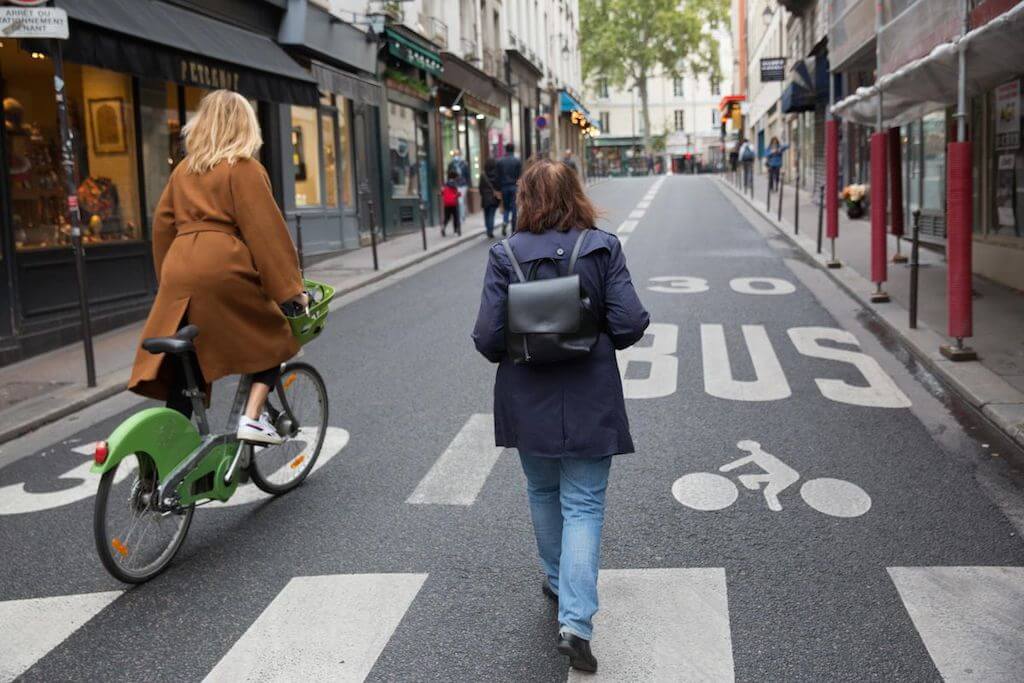
Paris ZTL allows cycling, pedestrians and limits cars
The initiative follows a striking finding that bicycles are now used for 11.2% of trips within the city, surpassing car usage significantly. This increase is up from less than 5% before the pandemic, underscoring a major behavioral shift towards cycling among Parisians.
The Vélib’ bike-sharing system has been expanded and modernized, with more electric bikes and additional docking stations across the city. This system provides an accessible and affordable option for residents and tourists alike, making cycling a convenient mode of transportation. With nearly 20,000 bicycles available, Vélib’ is one of the largest bike-sharing programs in the world .
According to Paris City Hall, Vélib’ saw a 30% increase in usage from 2019 to 2022, reflecting the growing popularity of cycling in the city .
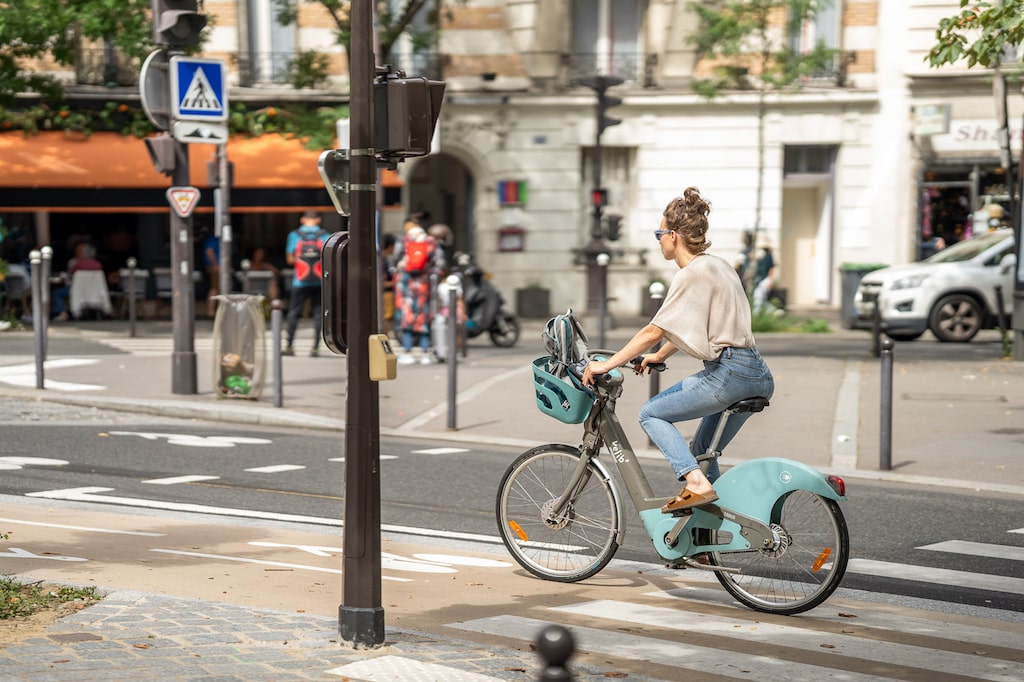
Bike share in Paris, France
The Parisian government has introduced financial incentives to encourage cycling. Subsidies for purchasing bikes, especially electric ones, and grants for bike repairs make cycling more affordable. These measures aim to lower the entry barriers and promote a culture of cycling .
The “Coup de Pouce Vélo” program, launched in 2020, provided up to 50 euros for bike repairs and up to 200 euros for the purchase of a new electric bike. This program has been extended due to its success, with over one million Parisians benefiting from these subsidies . The country of France has also offered as much as 4,000 euros as an incentive to switch from a car to an e-bike or bicycle.
“The goal of these programs is to induce new purchases of e-bikes,” said Bennett, in the blog post. “If you’re already buying a bike, $200 sweetens the deal, but if you weren’t planning on buying an e-bike, it probably won’t change your mind. Higher incentive values change minds and help get more people on bikes.”
Cycling infrastructure has been integrated with public transport systems, allowing for seamless transitions between biking and other modes of transit. Bike racks on buses and at train stations, along with secure bike parking facilities, make it easier for commuters to incorporate cycling into their daily routines .
The “RER V” project, named after the regional train system, aims to create a network of high-capacity bike lanes connecting the suburbs to the city center. This initiative will further integrate cycling with public transport, making it a viable option for longer commutes .
Cities should prioritize safety by creating dedicated bike lanes that are physically separated from car traffic. Paris’ model of using temporary lanes during the pandemic and then making them permanent can be replicated to ensure a quick and effective transition .
Case Study: According to a study by Cerema, the French Center for Studies on Risks, Mobility, and Environment, the separated bike lanes in Paris have reduced accidents involving cyclists by 25% .
Transforming central streets into pedestrian and cyclist zones can significantly enhance urban mobility and quality of life. Other cities can follow Paris’ lead by identifying high-traffic areas that would benefit from reduced car access .
Example: The pedestrianization of Times Square in New York City has shown similar benefits, including reduced traffic accidents and increased local business revenues .
Implementing and expanding bike-sharing programs can provide a flexible and cost-effective transportation option. Ensuring these programs include electric bikes can further encourage cycling, particularly in cities with challenging terrains or long distances .
Insight: A report by the International Transport Forum highlights that cities with robust bike-sharing programs, like Paris and London, have seen significant increases in cycling rates and corresponding decreases in car usage .
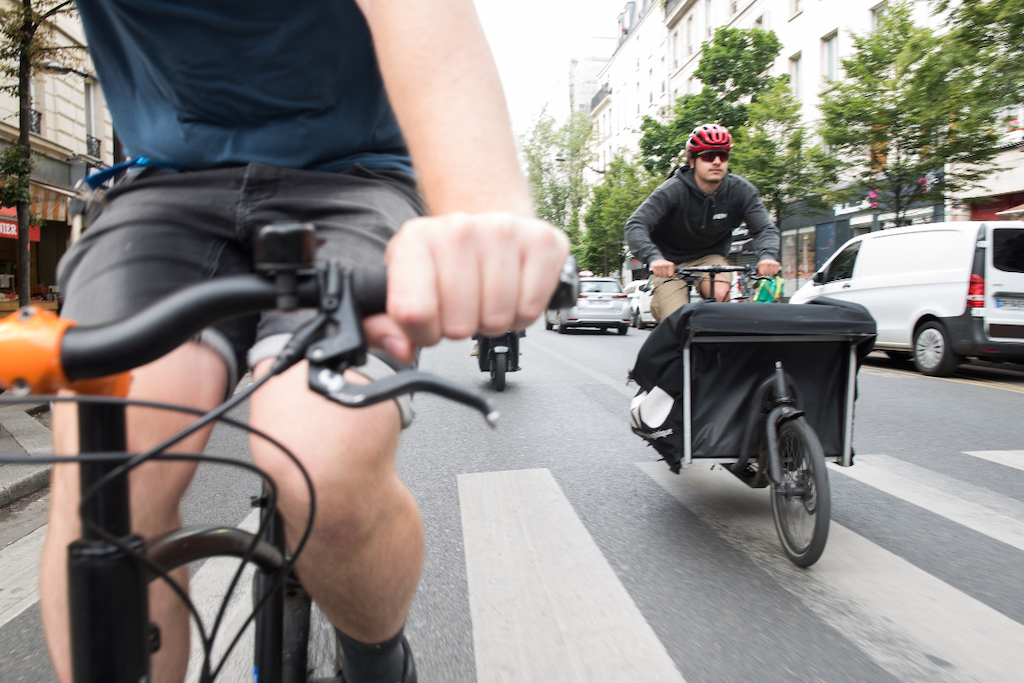
Livraison Vélo cargo
Governments can support cycling by offering financial incentives for purchasing and maintaining bikes. Subsidies and grants can make cycling more accessible to a broader population, fostering a more inclusive cycling culture .
Research: A study by the European Cyclists’ Federation found that financial incentives are one of the most effective ways to increase cycling adoption, with countries like Belgium and the Netherlands leading the way in offering substantial subsidies .
Integrating cycling infrastructure with public transport systems can enhance overall urban mobility. Cities should invest in facilities that allow easy bike parking and transport, encouraging more people to combine cycling with other forms of public transit .
Implementation: In Copenhagen, the seamless integration of cycling paths with the metro and train systems has made cycling an integral part of daily commutes, with 50 per cent of residents biking to work or school.
1. Commit to Long-Term Vision
Paris demonstrates how committing to a long-term vision for cycling can drive substantial changes. For other cities, this means setting ambitious but achievable goals and sticking to them, even when faced with resistance. Political leaders need to champion these goals and work towards them consistently, despite potential pushback from car-centric groups or businesses.
Paris’ commitment to becoming a “100% cycling city” by 2026 highlights the importance of having a clear and compelling vision. Cities like Los Angeles, which have been slower to implement cycling infrastructure, could benefit from a similar, bold commitment to reshape their urban mobility landscape.
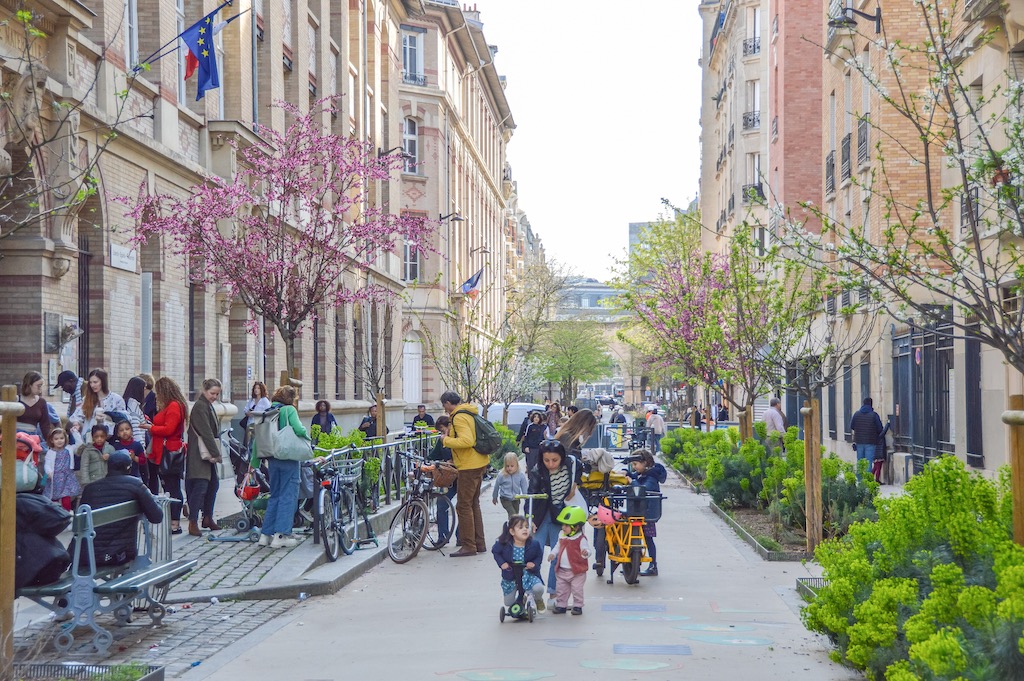
Paris school street (Dutch Cycling Embassy)
2. Prioritize Equity in Decision-Making
Ensuring that cycling infrastructure and policies are equitable is crucial. Paris has worked on making cycling accessible to all residents, including introducing financial incentives and expanding bike-sharing programs. Cities need to consider the needs of underserved communities and ensure that infrastructure investments are distributed fairly. That is where the idea of the 100% cycling city really takes hold. It’s not just about the center of the city or wealthier areas, it is about the entire city.
Cities can look at how Paris integrates cycling with public transport and offers subsidies to lower-income residents and expands its network to suburban areas. By doing so, they can ensure that all residents benefit from improved cycling infrastructure, not just those who are already more affluent.
3. Build Broad Coalitions
Paris’ transformation has been supported by various stakeholders, including local businesses, residents, and advocacy groups. Building a broad coalition in other cities can help gather support for cycling initiatives and overcome resistance. Engaging diverse groups in the planning process and addressing their concerns can lead to more sustainable and widely accepted solutions.
4. Measure and Celebrate Success
Regularly measuring the impact of cycling policies and effectively communicating successes can help build momentum and justify further investments. Paris has documented improvements in air quality, safety, and local business revenues, which helps reinforce the benefits of cycling infrastructure. Cities should establish clear metrics and share success stories to demonstrate the positive outcomes of their cycling initiatives.
Cities can benefit from Paris’ approach by setting up monitoring systems to track the impact of new cycling lanes and bike-sharing programs, then using this data to advocate for continued or expanded investments.
There is a reason Paris’ story is being communicated around the world, and that is because the city is more than happy to celebrate its accomplishments and let people know it is working.
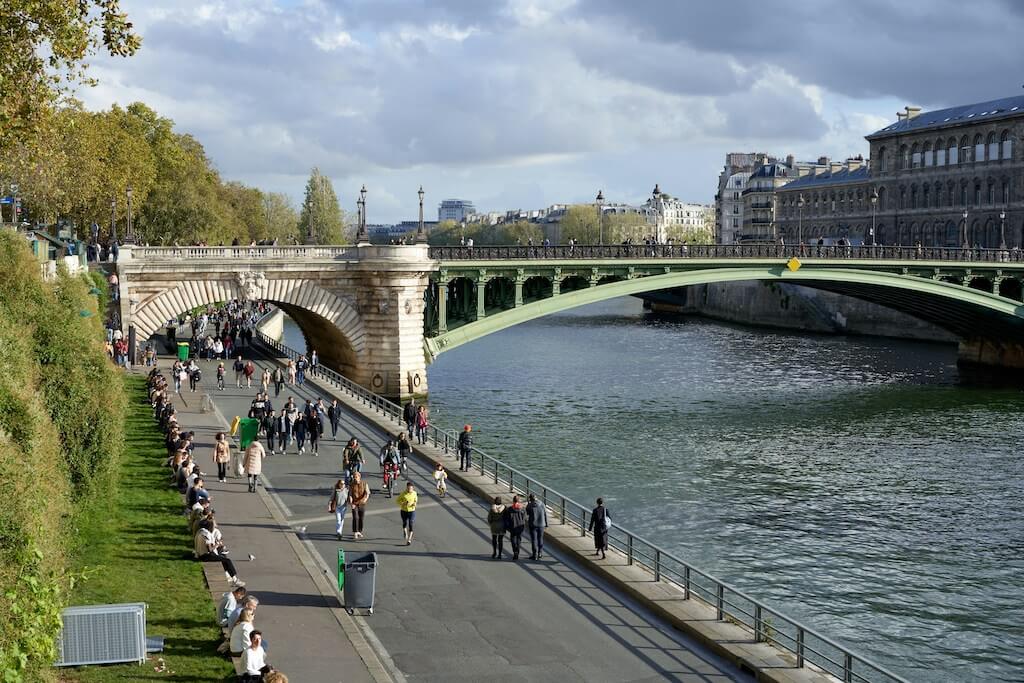
Paris cycling city along the Seine River
Paris’ transformation into a cycling-friendly city showcases the potential of people-centered planning and investment in promoting sustainable transportation. While challenges remain, the city’s progress offers valuable insights for other large, car-oriented cities aiming to embrace cycling. By prioritizing safety, pedestrianizing key areas, investing in bike-sharing programs, offering financial incentives, and integrating cycling with public transit, cities worldwide can learn from Paris and create more livable, sustainable urban environments.
Find inspiration in our Gear Guide that will keep you out on your bike through wind or rain.
Download Now
Leave a comment